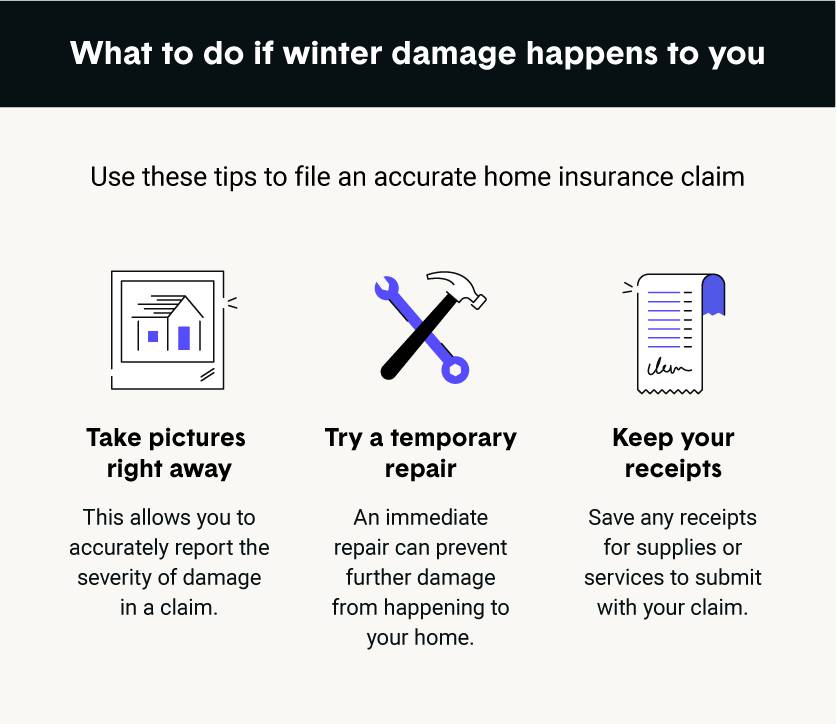Most common home insurance claims in the winter
Although most home insurance claims that are filed during the winter occur because of damage from winter weather, some are associated with heating your home or incidents from the holiday season. We’ve provided a summary of the most common winter home insurance claims to help you become more aware as a homeowner.
Frozen pipes
Frozen water inside of a pipe can cause the entire pipe to burst and result in extensive water damage and even mold in your flooring, drywall or household appliances. Burst pipes from 2021 winter storms cost insurers an estimated $18 billion in home and business damages.
Average individual claims for water damage due to burst or frozen pipes are costly and can range from $10,000 to $20,000. Homeowners in the top five states for frozen pipe losses should take appropriate precautions to keep this damage from occurring in their homes.
Top states for frozen pipe damage:
- Illinois
- New York
- Michigan
- Minnesota
- Pennsylvania
Snow and ice damage
In 2019, water damage and freezing made up 29% of home insurance losses, and the average claim cost about $11,100. Damage from snow and ice to your home can come in many forms during the winter. For example, ice buildup can occur on your roof after a rapid thaw and freeze cycle, and the weight of the buildup can cause structural damage to your roof.
Another destructive form of damage is ice dams, which happen when a buildup of ice along your roof’s edge disrupts the proper drainage of water. Ice dams typically form when melted snow runs down your roof but freezes before draining off the edge. These dams can retain water on your roof that eventually becomes heavy ice buildup or can cause mold problems in your walls and ceiling.
House fires
Winter hosts many holidays that are notorious for starting house fires. For example, Thanksgiving is the leading holiday for cooking fires with Christmas Day and Christmas Eve following close behind. Additionally, Christmas Day is the optimal day for candle fires, with the chances of starting one 2.5 times greater on this day than average. Whether it’s festive cooking or a lone candle, all homeowners should exercise caution and vigilance around open flames.
Home heating and lighting are also common culprits when it comes to house fires. Things like space heaters and holiday lights are known to be potential house fire sources. Make sure to keep flammable materials away from heaters, lights and radiators, and to always shut off electrical appliances after a certain amount of time.
Wind and hail damage
Wind and hail are forces to be reckoned with, and while you can take shelter inside your home to escape these elements, your house will always take the brunt of the force. After a hailstorm, it’s wise to inspect your roof and home for damages and file a claim promptly. Waiting for any damage to make itself known (e.g., a leaky roof) may prevent you from being paid for your claim.
Hail and wind claims made up 34% of home insurance losses, with the average claim costing about $10,800. Your coverage may include wind or hail exclusions, so make sure to check your policy to see if you’re covered for these damages.
Personal injury liability
The presence of ice on your property can mean a liability risk for you and anyone who visits your home. An icy stairway, sidewalk or driveway can be hazardous for anyone coming and going, and you’d be liable for any personal injuries that occur on your property.
Other hazards like falling debris or even icicles can also lead to potential injuries and lawsuits. Your typical home insurance policy will cover the costs of medical expenses and any liability expenses that arise from lawsuits.





